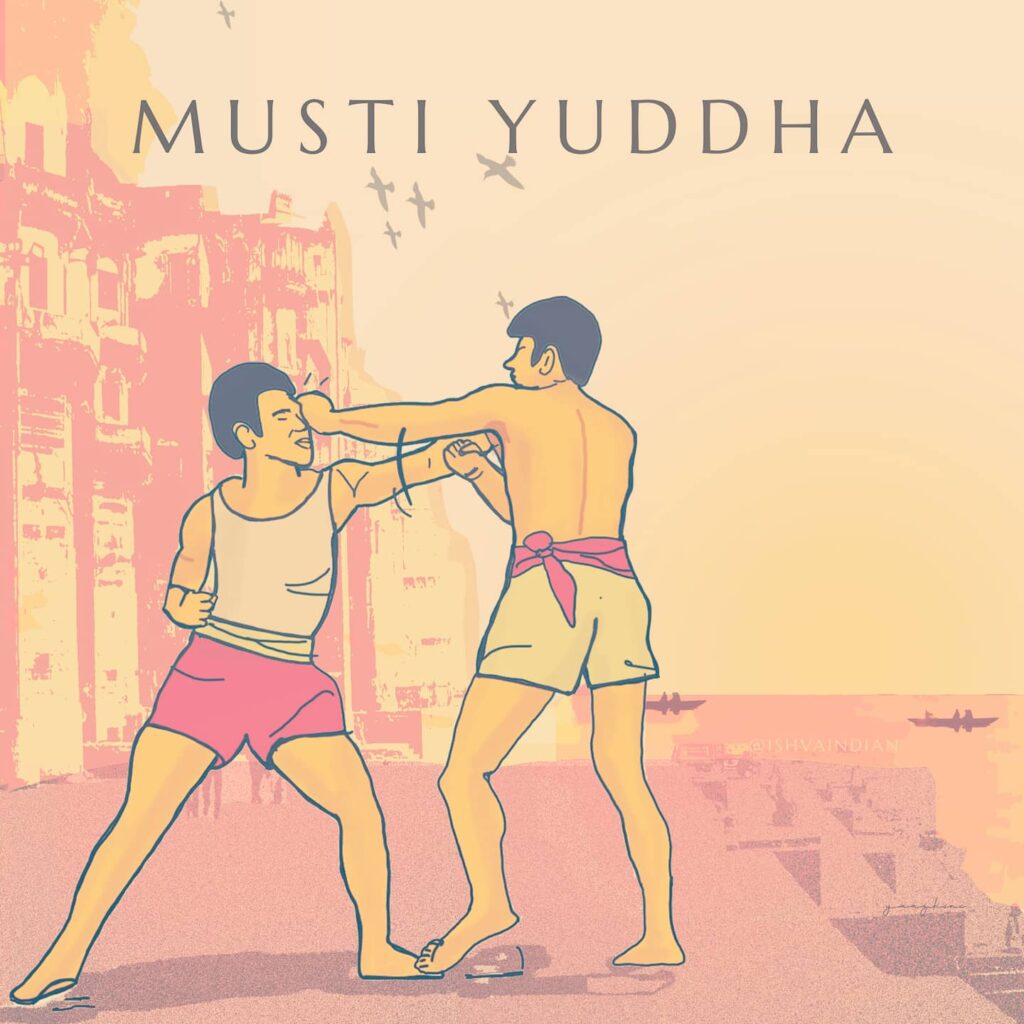Musti Yuddha, the perfected art of fist combat

Musti Yuddha in Sanskrit literally translates to ‘fist combat’ and that is precisely what this ancient Indian martial art is all about.
Weaponry
Musti Yuddha, differs from Malla Yuddha and other kickboxing styles in that, using punches to strike is more dominant than kicks, knees or headbutting. These boxers train vigorously, practicing punches and striking their hands against stones and even coconuts, until they are tough enough to break them!
Origins and Transmission
Tracing its roots to ancient india, Musti is mentioned in the Vedas as well as the Ramayana and Mahabharata. From the time of Rudraman of the Satraps to the army of Ranjit Singh, boxing was considered a prime skill for a warrior. The Musti Yuddha today is right out of Varanasi, the city having a long history with Musti Yuddha, having hosted boxing festivals for more than three centuries.
Mushti Yuddha has travelled along the Indosphere and has been a preceder and a strong influence in many famous martial arts of South East Asia such as Muay Thai, Muay Laos and Pradal Serey (of Cambodia).
Banishment by the British
The art form was driven underground during the time of colonization due to the introduction of western boxing in 1860s and a ban was imposed due to the casualties during the combat and due to the brutal fights that broke out amongst the ardent fans and spectators!
A certain British police commissioner is also said to have hosted one-on-one combats during the said prohibition under wraps and ever since then, today it has been reduced to merely illegal underground fights.
The Muay Thai (Thai Kickboxing) is now a trending global sport and inspires us to revive the ancient martial arts of India, adding a little ‘punch’ to our physical and mental training!
